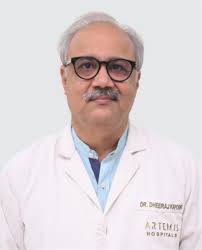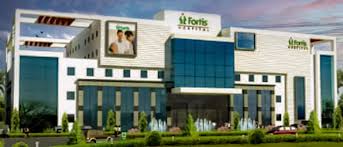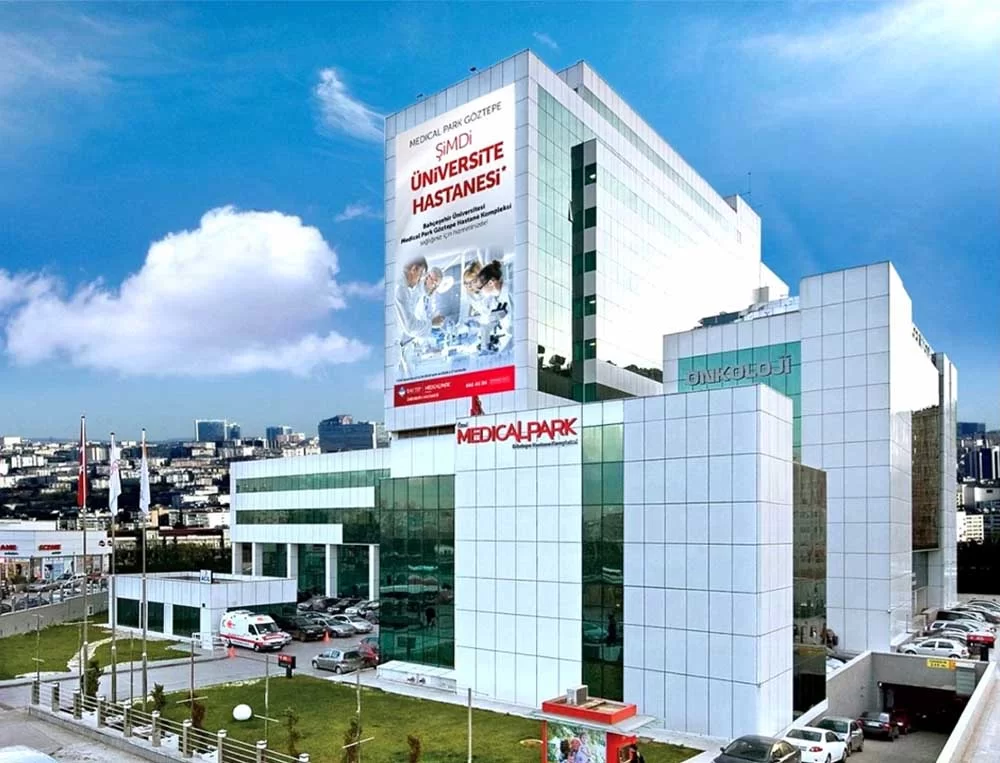General Surgery
Laparoscopic Cholecystectomy
Laparoscopic Cholecystectomy
Laparoscopic cholecystectomy in India offers safe, minimally invasive gallbladder removal with expert surgeons, modern facilities, and affordable care for international patients.
Laparoscopic cholecystectomy is a type of surgical operation that minimally involves the removal of the gallbladder; a small organ located below the liver that stores bile; a digestive fluid. It is done most often to cure gallstones (cholelithiasis), inflammation of the gallbladder (cholecystitis), or other issues in the gallbladder.
What is Laparoscopic Cholecystectomy?
Definition: This is the removal of the gallbladder with the help of a laparoscope (a thin tube with a camera) and small surgical instruments that are inserted through small abdominal openings.
Introduction: To treat symptoms of abdominal pain, nausea and vomiting, and avoid complications of gallstones or gallbladder disease.
Indications
- The presence of gallstones that generate pain or inflammation.
- Chronic inflammation of the gallbladder (chronic cholecystitis).
- Gallbladder polyps.
- No stones (biliary dyskinesia).
- Gallbladder cancer (in isolated cases, rarely).
Advantages
- Less pain than open surgery.
- Reduced hospital stay (in most cases outpatient or 1-day stay).
- There is quicker recovery (1-2 weeks to normal activity).
- Smaller scars.
Laparoscopic Cholecystectomy Surgery
The usual operation in removing the gallbladder through the least invasive operation is laparoscopic cholecystectomy surgery. It is done in cases of diseased gallbladder and in the majority of cases is brought about by gallstones or inflammation (cholecystitis).
Surgery Overview
- Type: Minimally invasive (keyhole surgery).
- Time: Typically 45 minutes to 1.5 hours.
- Anaesthesia: General anaesthesia (patient is asleep in full).
- Hospital Stay: In most cases same-day discharge or 1 night at hospital.
Surgical Steps
Anaesthesia & Preparation
- The patient is general anesthetized.
- Abdomen sterilized and cleansed.
Creating Access Points
- A total of 3- 4 small incisions (5-10 mm) are created in the abdomen.
- To enhance visibility, carbon dioxide gas is injected into the abdomen.
Introduction of Laparoscope and Instruments
- To display images on a screen, a laparoscope (minuscule camera) is used.
- The other incisions have the insertion of surgical instruments.
Gallbladder Dissection
- The cystic duct (tube that links gallbladder and bile duct) and cystic artery are located, clipped and incised.
- The liver is carefully detached as is the gallbladder.
Removal
- The gallbladder is removed with either of the small incisions (typically the navel).
Closure
- Instruments are removed.
- Gas is released.
- Incisions are stitched or sealed using surgical glue.
Laparoscopic Cholecystectomy Procedure
The Laparoscopic Cholecystectomy Procedure step by step is well explained here:
Preparation
- The patient is taken into hospital, examined, and anesthetized.
- Abdomen is washed and sterilized.
Creating Access
- The abdomen is punctuated with small incisions (typically 3-4, 5-10 mm) into which the abdomen is punctured.
- To inflate the abdomen with space to carry out surgery, carbon dioxide (CO 2) gas is introduced in the abdomen.
Inserting the Laparoscope
- The laparoscope (skinny tube with a camera and a light) is pushed through the umbilical incision.
- A live image of the interior of the abdomen is projected on a monitor by the camera.
Introduction of Surgical Instruments
- Other small instruments are inserted by use of other incisions.
- These instruments help the surgeon to work at the gallbladder carefully.
Dissection of Gallbladder
- Surgeon locates and removes the cystic duct (to gallbladder) and the cystic artery (to gallbladder).
- The structures are both clipped and cut.
- Cautious separation of the liver bed and the gallbladder is done.
Gallbladder Removal
- The removed gallbladder is retained in a retrieval bag and is drawn out using one of the small incisions.
Closure
- The instruments are taken off and carbon dioxide gas is removed out of the abdomen.
- The incisions are sealed using stitches, staples or surgical glues.
Duration
- Normally 45-90 minutes based on complexity.
Factors Affecting Laparoscopic Cholecystectomy Cost
The following is a tabulated analysis of the variables influencing laparoscopic cholecystectomy cost:
Hospital Type and Location
- High quality privatized hospitals or foreign hospitals are more expensive than state or middle quality hospitals.
- Generally, hospitals in metro cities are more expensive than in small towns.
Surgeon’s Expertise
- Gastrointestinal/ hepatobiliary surgeons are highly experienced or specialized and could have a higher charge.
- The complexity of cases that demand the involvement of senior specialists also makes it more expensive.
Preoperative Investigations
- Such tests as ultrasound, blood tests, ECG, and chest X-ray are typically required prior to surgery.
- Any other diagnostic procedures (CT, MRI, MRCP) increase the overall price.
Type of Surgery
Basic laparoscopic cholecystectomy is often cheaper than:
- Single-incision laparoscopic surgery (SILS).
- Robotic-assisted cholecystectomy.
- Open cholecystectomy (where necessary).
Patient’s Health Condition
Should include patients with diabetes, heart disease, obesity or liver disease:
- Extra precautions.
- Longer operative time.
- Increased price because of ICU treatment or extra monitoring.
Hospital Stay
- Normal cases take 1 day to be discharged.
- Increased hospitalization and overall cost are caused by complications (bile leak, bleeding, infection).
Anaesthesia and Medication
- The pricing depends on the nature of the anaesthesia, the charges by the anaesthetist and the type of drugs.
- There are also post-operative pain treatment and antibiotics which increase expenses.
Consumables & Equipment
- Surgical clips, staplers, laparoscopic instruments, and retrieval bags can be sold at different prices depending on the brand/quality.
Laparoscopic Cholecystectomy Recovery Time
The following is a description of post-laparoscopic cholecystectomy recovery time:
Immediate Recovery (Hospital stay)
- The majority of patients are released either the same day or 24 hours of surgery.
- You can experience minor shoulder pain or stomach pain because of the gas carbon dioxide that was used in the surgery.
First Week
- Day 1-3: Light exercise (walking about) is recommended. Suffering and swelling get better gradually.
- Day 4-7: Patients are generally able to perform some light household chores, desk work and short walks.
2 Weeks
- Majority come back to normal day activities in 1-2 weeks.
- Office workers can resume work some 7-10 days.
3–4 Weeks
- Due to strenuous activities such as gym exercise, heavy lifting, or sporting activities, such activities might be resumed after 3-4 weeks based on the speed of recovery.
Diet Recovery
- Begin with fluid right after surgery.
- Graduate to low fat, soft food in the initial days.
- Normal diet may typically be started again after 1 to 2 weeks, but fatty or spicy food may initially result in bloating or loose stools.
Full Recovery
- Internal tissues will normally need 4-6 weeks to heal completely.
- Minor scars disappear in a few months.
Top Surgeons for Laparoscopic Cholecystectomy
- Dr. Paritosh S Gupta
- Dr. Adarsh Chaudhary
- Dr. Ajay Kumar Kriplani
- Dr. Rashmi Pyasi
- Dr. Pradeep Chowbey
Best Hospital for Laparoscopic Cholecystectomy
- Artemis Hospital, Gurgaon
- Medanta-The Medicity, Gurgaon
- Fortis Memorial Research Institute, Gurgaon
- Max Hospital, Saket
Conclusion
The most common and effective surgery that is used to remove gallbladder is laparoscopic cholecystectomy. It is a minimal invasive surgery with major advantages such as reduced incision, reduced pain, shortened recovery time and reduced hospitalization than the open surgery. The majority of patients would be able to resume normal functioning in 1-2 weeks and full recovery is possible in 4-6 weeks. Though usually harmless the operation has few risks including infection, bleeding or bile duct damage. The total price and the recovery might depend on the type of hospital, experience of the surgeon, patient health, and post-operative complications.
Why Choose GetWellGo for Laparoscopic Cholecystectomy?
GetWellGo is regarded as a leading supplier of healthcare services. We help our foreign clients choose the best treatment locations that suit their needs both financially and medically.
We offer:
- Complete transparency
- Fair costs.
- 24 hour availability.
- Medical E-visas
- Online consultation from recognized Indian experts.
- Assistance in selecting India's top hospitals for Laparoscopic Cholecystectomy treatment.
- Expert gastroneterologist with a strong track record of success
- Assistance during and after the course of treatment.
- Language Support
- Travel and Accommodation Services
- Case manager assigned to every patient to provide seamless support in and out of the hospital like appointment booking
- Local SIM Cards
- Currency Exchange
- Arranging Patient’s local food
FAQ
Does laparoscopic cholecystectomy cause pain?
- Light pain occurs in several days, particularly at the sites of incision or the shoulder (as a result of gas that was used in surgery). The pain is usually smaller compared to open surgery and can be treated with drugs.
Do you have any dietary limitations following the removal of the gallbladder?
- First, the patients should consume light, low-fat foods. In the long run, the majority of them get back to normal diet, but some might have to continue with temporary diarrhea or bloating with fatty foods.
Am I able to lead a normal life without having a gallbladder?
- Yes. The gallbladder is merely storage of bile; once removed, bile is released directly on the liver-intestine. Majority of the population lives normal lives without it.
TREATMENT-RELATED QUESTIONS
GetWellGo will provide you end-to-end guidance and assistance and that will include finding relevant and the best doctors for you in India.
A relationship manager from GetWellGo will be assigned to you who will prepare your case, share with multiple doctors and hospitals and get back to you with a treatment plan, cost of treatment and other useful information. The relationship manager will take care of all details related to your visit and successful return & recovery.
Yes, if you wish GetWellGo can assist you in getting your appointments fixed with multiple doctors and hospitals, which will assist you in getting the second opinion and will help you in cost comparison as well.
Yes, our professional medical team will help you in getting the estimated cost for the treatment. The cost as you may be aware depends on the medical condition, the choice of treatment, the type of room opted for etc. All your medical history and essential treatment details would be analyzed by the team of experts in the hospitals. They will also provide you with the various types of rooms/accommodation packages available and you have to make the selection. Charges are likely to vary by the type of room you take.
You have to check with your health insurance provider for the details.
The price that you get from GetWellGo is directly from the hospital, it is also discounted and lowest possible in most cases. We help you in getting the best price possible.
No, we don't charge patients for any service or convenience fee. All healthcare services GetWellGo provide are free of cost.
Top Doctors for General Surgery
Top Hospitals for General Surgery
Contact Us Now!
Fill the form below to get in touch with our experts.







